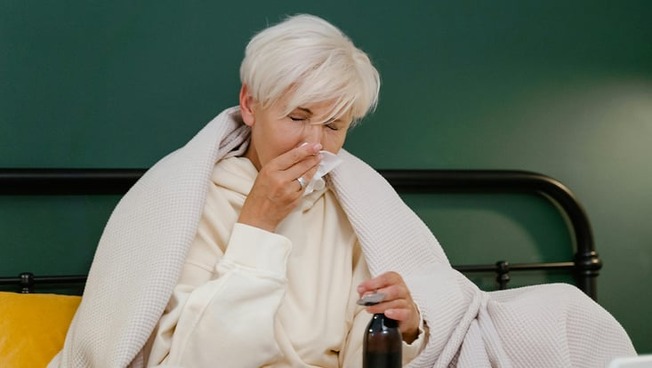4 February 2025
Study on brain activity and antibody concentrationWatching Videos of People with Cold Symptoms Activates Brain Regions and Triggers Immune Response

Photo: Pexels
In human history, communicable diseases, in particular viral respiratory infections such as SARS-CoV-2 or influenza, have been leading causes of death. The transmission of pathogens is a constant threat which effected the development various physiological mechanisms in the human immune system, for example, protein release to fight off pathogens.
In order to reduce the probability of contact with pathogens, human bodies use a range of behavioral adaptations, which are called behavioral immune system. It helps us scan our environment for smells or visible indications of pathogens and triggers disease avoidance behavior and feelings such as aversion or disgust.
A recent study, conducted by researchers at the University’s Department of Biology provided insight into how our 2 immune systems interact. Sixty-two participants watched short videos of people with or without signs of infectious diseases. Meanwhile, their brain activity was measured with functional magnetic resonance imaging.
The researchers also analyzed the immune system’s first line of defense by measuring the release of secretory immunoglobulin A (sIgA) in saliva. SIgA is the most important antibody for fighting pathogens in the respiratory tract and normally released when pathogens come into contact with mucous membranes. However, there is also evidence of a proactive sIgA release in response to signs of disease, as demonstrated by 2 of the participating researchers in previous studies.
“Perceiving sneezing and sick people compared with [perceiving] symptom-free people activated the anterior insula, a brain region that is involved in interoception, the perception of one’s own physiological reactions, which is an important interface between the brain and the immune system. The test subjects also showed an increased release of sIgA analogous to the strength of the insular activity,” says Dr. Esther Diekhof, head of the neuroendocrinology working group in the University’s Department of Biology and author of the study. “This indicates this brain region is key to controlling the humoral immune response, which prepares the oral mucosae for contact with the expected pathogen, for instance, when someone sneezes in the immediate vicinity.”
“By contrast, the amygdala, a brain region involved in emotional responses such as fear and anxiety, showed increased activation in all videos featuring humans. This indicates a nonspecific alertness to the presence of humans,” says Judith Keller, a doctoral researcher in the neuroendocrinology working group and coauthor of the study.
“All in all, the study results show a mechanism of assessing infection indicators. While the insula coordinates central immune activation, the amygdala could work more like an alarm system for social situations with an increased risk of transmission,” says Diekhof. “This immune response could help human beings handle infection risks by activating countermeasures and preparing the body for the expected pathogen load.”
Original publication:
Judith K. Keller, Esther K. Diekhof (2025) Visual cues of respiratory contagion: Their impact on neuroimmune activation and mucosal immune responses in humans, Brain, Behavior, and Immunity, Volume 125. DOI: https://doi.org/10.1016/j.bbi.2025.01.016
